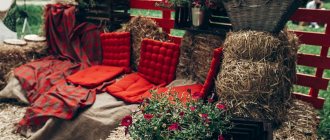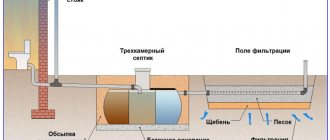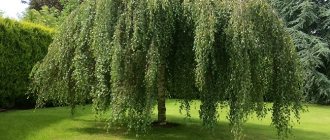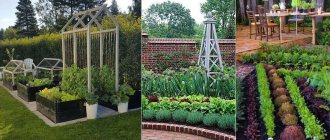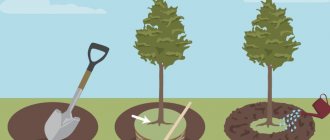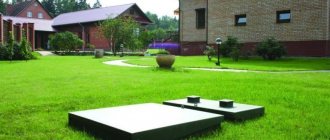You can make a suburban area beautiful by taking into account the practical use of the land. The planning of the vegetable garden and garden is carried out taking into account the characteristics of the soil and the location of the cardinal directions. On the territory free from beds and fruit trees, places for recreation are arranged and outbuildings are placed.
When starting to plan a vegetable garden or garden, it is important to understand what exactly you want to see on your site
Planning rules or how to plan a vegetable garden
Before drawing up a detailed plan, it is advisable to decide on the type of layout. Adherents of strict lines and forms prefer regular planning. Trees and shrubs are planted in even rows, beds and flower beds are made in the form of geometric shapes. The paths are also laid. The voids are filled with lawn.
It is necessary to start planning with a site diagram, on which the location of buildings, paths and areas allocated for the garden and vegetable garden should be noted
First of all, you need to decide on the place for the garden and the size of the allocated area.
There is a landscape layout, close to the natural style, of a garden plot and vegetable garden; how to draw up a garden plan is decided based on the features of the relief. Garden and garden crops are combined with ornamental plants and herbs. The planting plan for the summer cottage includes vegetable crops, fruit and stone fruit trees, and berry bushes. Many of them can be used as decorative elements.
The sunniest place is allocated for the beds, without shading on the south side
The length of the beds can be arbitrary, but the width is such that you can reach the middle of the bed with your hand
There are no standards for the ratio of the area of the garden and vegetable garden to the area of the plot; it all depends on the needs of the owners of the plot.
When arranging a vegetable garden, you should not mindlessly copy other people’s experience, but you should know some general principles
It is important to follow the basic rules:
- The vegetable garden is placed on a flat, warm place away from trees and tall buildings.
- Trees are planted on the north side so as not to cast a shadow on vegetable plantings.
- Berry bushes are used for zoning areas and hedges.
- Between the beds it is allowed to lay out flower beds and flower beds.
With the correct arrangement of beds and fruit trees, it will be possible to obtain a harvest and create a harmonious landscape design.
For cold climates, a greenhouse is not a luxury, but a necessity
Nowadays, it has become fashionable to arrange a decorative vegetable garden, in which vegetable crops also perform decorative functions.
Beetroot and carrots can be added to the flower garden. Decorative greenery will highlight the beauty of nasturtiums; calendula and marigolds will protect vegetable crops from insect pests.
When choosing plants for planting together, it is necessary to take into account their likes and dislikes.
Implementation of plans
After the style and landscaping scheme have been chosen, you need to create a sketch and mark the location of the main objects on it. It is important to mark everything on it: a house, a bathhouse, a gazebo, a fence, electric poles, and even those trees that are already growing on the site and that will remain on it after clearing the territory.
On the plan you need to mark the location of the cardinal points and use a stroke to indicate the height of each object. It will help you understand where the shadow will always be. These places are not suitable for a garden; there you can arrange paths, lay out a lawn, or build a pond.
Then you can begin to designate places for planting large fruit trees. No more than seven trees can be planted per hundred square meters. As they grow, they will cast a shadow and interfere with each other. If the tree fights for light, it will not have the strength to set and ripen the fruit. Experienced gardeners pay attention to the fact that with proper and regular pruning, up to 15 trees per acre can be planted. These activities will require some effort and time. If there are none, then it is worth reducing the number of trees planted to a minimum.
Sketch of the future garden Source muzicadl.com
Cherries and apricots are not subject to pruning: their fruits are located along the entire length of individual branches. Apples and pears need pruning. This makes their fruits larger and their number increases noticeably. From such trees you need to form balls, the height of which should not exceed two meters. If such trees are planted close to the fence, then it is necessary to form a flat shape using pruning.
Trees are planted every four meters; the distance between them can be filled with bunches of fruit and berry crops (currants, gooseberries). It is better to form rows from south to north, then the shadows from them will form much less.
Dividing the territory into zones
A rectangle for a garden and vegetable garden, of course, is easier to plan than a triangular or trapezoidal plot, a rhombus, or a plot on a slope. But even the most problematic area can be turned into a cozy landscape composition if you approach the design creatively.
Dividing the site into zones will help to correctly distribute the territory
Knowing the canons of zoning, you can independently plan a garden of 4 acres, 6, 8 or 12 for planting; the scheme provides for several main zones.
When zoning a territory, it is important to take into account the cardinal directions, prevailing winds and features of neighboring areas
The front door occupies 6–8%, it is immediately visible; the main decorative load falls on this territory. It is recommended to make a rock garden or rock garden with a minimum of green spaces, use vertical gardening, and border plantings along footpaths.
The front area is the face of the site, on which the first impression of the owners of the house depends
Fruit trees, berry gardens, and shrubs must not be placed near driveways or parking lots. Only decorative, unpretentious perennials are planted and lawns are made.
The gardening area is a place for planting useful crops, placing greenhouses, greenhouses. Usually occupies up to 75% of the site area; the sunniest areas are chosen. Fruit trees can be placed closer to the seating area to create pleasant shade. Berry trees are planted on borders to improve the landscape. It is better to provide tiered plantings - in the background - tall trees, then shrubs. In the foreground, when planning the beds, they are combined with flower beds and lawns.
Varieties of fruit trees and shrubs must be selected taking into account local climatic conditions
To successfully grow garden crops, you need fertile soil. If the soil on the site is poor, you will have to import black soil, plant green manure and apply mineral fertilizers
It is better to place household buildings in low-lying areas, hide them in the shade of trees, behind border plantings, and green hedges. A recreation area and playground occupy 10 to 15% of the site. Even in a small area you can plan a functional, cozy place with a barbecue, garden furniture, a gazebo, and a swing. Having decided on the proportions, we move on to the details. How to correctly place fruit trees and shrubs in the garden on the diagram can be seen in the selection of photos.
Outbuildings are usually located in the most inconvenient places for gardening crops
A recreation area with a gazebo or pergola is placed in the depths of the site away from the roadway
The playground should be clearly visible from anywhere on the site
Distressed gazebo-tea house
Back in 2010, simultaneously with the bathhouse project, Arnau commissioned the architect to design a gazebo, also known as a tea house. There are no complaints about the bathhouse.
Things didn't work out with the house from the very beginning. And they had to “pull it out” from the designer, and there was no luck with the implementation.
ArnauFORUMHOUSE Member
The first contractor stole the advance payment for it, and then fed me breakfast for a year. The second one made it so that the house could fall from the slightest breath of wind. The third strengthened the house for one season, then left everything to chance. In the second season I started making a roof - from terraced hardwood boards, terrace corrugated boards! You have never seen anything worse in the area of tea houses, believe me. And only Vladimir was able to finish the unfortunate tea house and cover it with larch shingles. For which I am very grateful to him.
Visualization.
During the summer of 2011, the garden did not undergo any major changes - the main efforts were devoted to the construction of a site for the tea house and a pond in front of it. The area of the reservoir is about 30 m², depth is up to 1.2-1.4 m, decorative purpose. Having already covered the pond bowl with a membrane, they finally brought in a batch of shrubs and trees. This time, Arnau strictly monitored the quality of the planting material and chose it from “far from the cheapest nursery.” At the end of October, we planted everything we bought and completed the stone wall that should separate the “forest” part of the site.
At this stage, the understanding came that we would have to change the contractor again, since the current one is more likely a “foreman, not a designer,” which causes a lot of problems. Yes, the team did some things well, but for this they had to literally stand their ground. And when there was no such opportunity, the work either stalled, or the result turned out to be far from planned.
Mixed style of territory design
Free planning of a vegetable garden is a budget option for landscape design without strict zoning. Ideal for an area with uneven terrain, a variety of outbuildings in different places.
Mixed design style suits both small and large areas equally well
First, buildings are marked on the plan and shady areas are shaded. Sunny areas of the territory are used for cultural plantings, paths are laid in the rest, flower and stone compositions and lawns are made. They achieve rational use of all corners of the site, combining garden plantings with decorative ones. Useful crops are harmoniously woven into the design of the site and produce a good harvest.
With a mixed layout, plants are planted according to a pre-thought-out scheme, but not in a strict order, but in groups, combining fruit trees and shrubs with ornamental vegetation
When allocating a plot of land for fruit and stone fruit crops, the growth of the crown should be taken into account. You can use fruiting crops for background vegetation.
Season five - the house is ready, in the garden, if not the final, then the main
Compared to May 2013, in May 2014 the site looks “more cheerful”, but if you don’t take care of the reservoir and only appear intermittently, it takes on a very unpresentable appearance.
Mid June.
The mentioned attempt to crossbreed a tea house with a decking board, after which the contractor was sent from the site. But the terrace board came in handy later.
By the end of September, the house is finally under an adequate roof, and the rest of the garden areas are looking good. All the work in the house had just been completed, and Alexander had the opportunity to live in it comfortably and spend more time on the site. That is, to work closely with the garden, mainly on your own, attracting performers for some of the work.
The season closes at the end of December.
What are the best trees to plant?
Trees create a special atmosphere of comfort and color. The location of fruit and stone fruit trees depends on the level of groundwater. Crops need good drainage, room for roots to grow, and enough light. They will not grow in low-lying and flooded areas.
Fruit crops are selected taking into account their further growth and pollination needs
When planting low-growing berry bushes, their need for sunlight is taken into account.
There is a standard set of fruit-bearing zoned crops; apple trees, pears, plums, and cherries (grow throughout Russia) are selected from this list. In the middle zone, apricots bear fruit, mulberries grow, and sea buckthorn grows in the Urals and Siberia. Coniferous trees and shrubs always look advantageous.
Landing method
When digging a planting hole, we throw the fertile layer of soil in one direction, and the bottom layer in the other direction. Humus and mineral fertilizers are added to the bottom: 500 g of superphosphate, 100 g of ammonium nitrate, 70 g of nitrate.
Here's how to properly apply fertilizer:
- Mix mineral fertilizers well with the soil and place them at the bottom of the hole.
- Sprinkle a small layer of humus.
- We fill the soil from the fertile layer.
The roots of the seedling should not come into contact with mineral fertilizers, otherwise they will burn and the tree will die.
toliam1 FORUMHOUSE Consultant
Apply fertilizers very carefully when planting, as they can burn the roots. Therefore, either separate it with a layer of neutral soil, or don’t add it at all. When the trees come to life, apply it into the punctures.
A mound of fertilizer and soil should form at the bottom of the planting hole. We place a seedling on it, straighten the roots well, cover it with soil from the fertile layer, making sure not to cover the root collar.
Tamara Nikolaev Member of FORUMHOUSE
The upper mark can be checked on the board by placing it on top of the hole: the root collar of the tree should be at the level of the board.
We compact the soil in the hole with our foot, then take the seedling by the stem and gently lift it several times with shaking movements to achieve more complete contact of the roots with the soil. Once again we compact the soil in the hole. We make a shallow hole around the tree, water it with water, mulch with sawdust or humus, or leaves (always decorative, not fruit plants).
After planting, the seedling must be cut back by at least 1/3. Do not regret and do not be afraid, it would be wrong not to prune. The seedlings lost part of their roots when dug up in the nursery, many of the remaining roots died off during storage, and the remaining weak root system cannot cope with providing the above-ground part of the plant with nutrients. Trim the seedling, and it will grow and develop normally, without getting sick.
Selection of ornamental plants
Berry bushes are chosen from the point of view of productivity and decorativeness. Gooseberries and currants are suitable for border and zone planting, hawthorn, red bird cherry, and chokeberry are suitable for hedges. Barberry and honeysuckle tolerate pruning well. Raspberries and blackberries are placed along the fence, along the boundaries of the site or in rows near outbuildings. Dogwood, shadberry, viburnum, and red-leaved apple trees are planted as ornamental plants.
For a small area, it is better to select unpretentious plants that can perform a dual role. For example, barberry - on the one hand, it is a beautiful ornamental plant, and on the other hand, it is a joy for cooks and connoisseurs of traditional medicine.
Dwarf apple and pear trees are another practical solution for a small area
When planning a vegetable garden, beds, plantings, the design takes into account the compatibility of plants, the biological characteristics of crops, and the requirements of agricultural technology: frequency of watering, requirements for lighting.
Planting a variety of plants on the site will allow you to enjoy an attractive view throughout the year.
You need to plan your landscaping for the entire season. Perennial flowers are added as annuals, taking into account the flowering period, so that there will be flowers in different parts of the area all season. Shrubs that change leaf color in the fall are placed in the front area. Unpretentious crops are placed in hard-to-reach places, while those requiring care are placed in a free access zone. Crops are combined compositionally, coniferous crops with deciduous ones.
To decorate rockeries, you can use herbs and different types of lettuce. Flowers are planted in vegetable beds to repel pests.
Don’t forget about ornamental plants, which play an important role in the overall atmosphere of the garden plot.
Options for planning a garden and vegetable garden on a site with diagrams, photos of the best design solutions are presented in the selection. Other people's works inspire you to realize your own ideas.
The fourth season from the beginning of the development of virgin lands
In May 2013, work had not yet begun, the site looked like this.
At the beginning of July, they got around to the long-suffering tea house and the same contractor began building a firewood shed.
In August, they began installing wooden gratings along the corrugated sheet fence, and this process ended in 2021 - “because it’s expensive.”
In the garden, something began to emerge only towards the end of October - the heathers and turfs are already showing themselves as a bright spot.
Photo: A selection of successful planning solutions
Six years from “was” to “became”
Arnau opened his topic with a detailed description of all the misadventures and successes in June 2015, in the first message he posted a photo of what happened and how it became.
The second photo is from June, and he started working in the garden in the spring.
ArnauFORUMHOUSE Member
The end of April 2015, I put up stone troughs, in which I later built mini rock gardens. Nowadays, saxifrage, gentian, grosgrass, pinks and other alpines grow successfully.
In mid-June, Alexander began decorating the back side of the fence with mats made of willow vines - due to the overgrown growths, it turned out not too neatly, but much better than it was. And if you consider that such decor is much cheaper than custom-made trellises, and is more appropriate in the “forest” area of the garden, everything is great.
Mid-July - the beds have been developed, the pond is still in mud, stones are still flying off the pebble path, but in general, it is already a full-fledged garden and park complex.
Front garden
A properly designed front garden under the windows of a house is more than half of the pleasant visual impression made by the garden. It is this kind of front garden that creates the feeling of painstaking work done on the territory. In this case, the rest of the area can generally be left as a lawn surrounded by bushes. And instead of flower beds, in this case it would be logical to create mixborders with a free plant arrangement. These, even if overgrown with weeds, will still look attractive.
As for varieties, you need to choose plants that are resistant to the local climate for mixborders. And you should make sure that they are combined with each other according to:
- color;
- height;
- and form.
The best place to design such “lazy flower beds” is at the intersection of paths, where mixborders complicate the image of the garden, making it more meaningful and thoughtful.
Evergreen garden
Coniferous shrubs and trees must be present in any garden, regardless of its layout and area. Firstly, these plants are beautiful, and secondly, they are able to perfectly “connect” a variety of bushes and flowers with each other (for example, in mixboards).
In general, a garden can be created from only thujas and junipers. And it will turn out amazingly beautiful if you play with color and shape. Use, for example, yellow-colored Aurea with white-tipped Albospikata. Both varieties, as well as many others, can be easily purchased in nurseries (either as very small seedlings or teenagers 3-5 years old).
Proper planting of conifers (in the right places, in holes of a certain depth and width) will, of course, require time and effort. But this is only once, and such plants will please the eye almost forever.
With minimal care, within a few years the coniferous garden will begin to amaze with its richness of shapes and colors. It will only be necessary to give him freedom.
( 75 votes, average: 4.90 out of 5)
DIY sliding gates
Metal picket fence - characteristics, advantages and do-it-yourself installation rules
